Vendors Discuss Gartner MQ for Analytics & BI Platforms 2019
By Gabriella Pirrone
April 17, 2019
Advanced Analytics, AI, Analytics, Business Intelligence, data, Exclusive Interviews, gartner, IBM, SAP, TIBCO
With so many differentiators that make up today’s analytics and business intelligence platforms on the market, choosing the right tool to track performance and make decisions based on data-driven insights can be a daunting task.
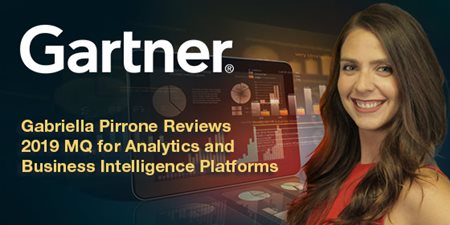
To aid in this decision, the Gartner Magic Quadrant for Analytics and Business Intelligence Platforms 2019 report was released in early February which takes an in-depth look at modern analytics and BI platforms along with the exploration and insights that make up augmented analytics in a single platform. The twenty-one vendors outlined in the report help inform data and analytics leaders to either complement their existing solutions or move to an entirely new vendor. Of the fifteen critical capabilities that make up an analytics and BI platform, the top five use-cases used by Gartner to define and assess product capabilities are agile, centralized BI provisioning, decentralized analytics, governed data discovery, OEM or embedded analytics, and extranet deployment.
As always, each vendor in the report was identified with three strengths and three cautions which provides a way for decision-makers in the market for this technology to decide who the better fit is. For this article, I had the privilege to speak with three of those vendors from the report—IBM, SAP, and TIBCO Software—to hear their thoughts on what Gartner had to say about one strength and one caution that I chose to highlight from the report.
IBM
Being recognized as a niche player, one of IBM’s strengths that Gartner emphasized was their global physical presence, which includes its expansive network of partners. Knowing that a solid partner network can be crucial in any industry, Gartner placed them in the top third of vendors with this skillset. I asked Mike Norris, Director, Offering Management, Business Analytics at IBM, how they were able to achieve this type of presence and availability of relevant skills?
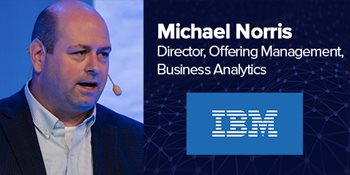
“IBM has a 108-year history of being at the forefront of driving the future of technology by providing customers around the world with the solutions they need to innovate and drive a competitive advantage in their respective market. We’ve been a long-time leader in Data for Good and pushing to close the diversity gap. The key behind our success is our vast, skilled workforce, coupled with one of the world's premier Research & Development organizations and through our numerous partnerships. We’ve developed a large ecosystem of partners, particularly with offerings like IBM Cognos Analytics, who don’t just re-sell our products but actually build solutions to meet our customer’s needs around the world. Our complete Data and AI portfolio is no exception to the Cognos Analytics example of how we’ve worked with partners to specifically transform our offerings to help clients on their journey to AI, enabling them to bring the power of AI to their data, wherever that data lives, and ultimately gain those valuable insights needed to improve business performance.”
Mike makes mention on their Cognos Analytics, an augmented analytics capability brought over from IBM Watson Analytics. Although the Cognos Analytics was an upgrade from their earlier version, Gartner cautioned the product with “inconsistencies in platform capabilities across reporting, exploration, and augmented analytics” because of its redesign. My next question for Mike was what he thought of this caution, their plans for IBM Cognos, and what their customers can expect?
“Cognos Analytics enjoys an extremely strong following of thousands of happy customers, each of whom is leveraging its capabilities to manage, organize and analyze their rising data volumes and with a similar goal in mind; make data-driven decisions. Over the years, and especially within the last 18 months, Cognos Analytics has won numerous awards for design and performance, including last month's Big Innovation 2019 award from Business Intelligence Group, for innovation. We have built the next-generation business intelligence platform which brings new machine learning and natural-language elements, as well as covers Mode 1 and Mode 2. These key capabilities are critical to the next-generation of use cases.
To use Gartner’s own language, IBM Cognos Analytics covers all three modes of BI: Mode 1 (“formatted production-style reporting”), Mode 2 (“visual-based exploration and agility”), and Mode 3 (augmented analytics). We’re pleased Gartner recognizes this by saying: “IBM Cognos Analytics 11.1 is one of the few offerings that include enterprise reporting, governed and self-service visual exploration, and augmented analytics in a single platform.” In the coming year, we plan to continuing engaging with Gartner to ensure that our product capabilities are aligned with the direction of the market, as we continue our effort to infuse IBM Cognos Analytics with augmented intelligence capabilities, ultimately allowing both business users and IT pros to harness data to explore the unknown, identify novel relationships in data, get a deeper understanding of outcomes and challenge the status quo.
You can read what clients have to say about IBM Cognos Analytics on Gartner’s Peer Insights page on Cognos Analytics.
And lastly, these are some of the things other analyst firms have said about Cognos Analytics recently:
-
The July 2018 BARC Score Enterprise BI and Analytics Platforms report rated us as a “Market Leader” — the highest categorization given to any vendor.
-
In November 2018, Krishna Roy of 451 Research wrote, “The result of development work carried out for over a year has turned Cognos Analytics into a compelling BI and analysis platform that hits all the market requirement and trends, including smart data discovery, augmented analytics, and automated predictive analysis.”
-
Forrester Research identified us as a BI market leader even before all the improvements of 2018, noting that clients “gave IBM high scores for quick time-to-value, scalability, stability, security, cloud/hybrid architecture, extensibility, and frequency of upgrades.”
-
The 2019 Ventana Research Analytics & BI Value Index report states: "IBM offers a comprehensive product line...for discovery, reporting, planning and predictive analytics [and] is one of the few vendors we evaluated to offer this breadth of functionality."
SAP
Last year, SAP released an announcement for their new Analytics Cloud solution, “a single solution for business intelligence and collaborative planning, enhanced with the power of predictive analytics and machine learning technology.” In the report, Gartner notes the Analytics Cloud, more specifically, the new ML-driven functions and NLP-based search as a strength, and, “one of the highest rated platforms for augmented data discovery capability.” Because of these improvements, and being named a visionary, I wanted to ask Nic Smith, Global VP of Product Marketing at SAP Analytics Cloud, to share his thoughts on the Analytics Cloud and how they achieved this success?
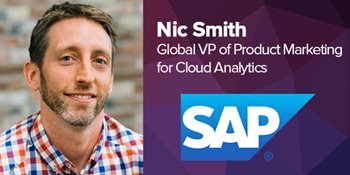
“SAP is investing heavily in its smart analytics capabilities and is positioned for where we believe Gartner anticipates the market is heading with augmented analytics. Enhancements in smart search help users find the right content, and algorithms guide data discovery and pattern detection with no data scientist required. SAP’s strategy to bring all analytics together in one cloud-based platform for business intelligence (BI), enterprise planning, and augmented analytics is a clear market differentiator.”
Although the SAP Analytics Cloud was mentioned as a strength, its “Product quality and performance” was a caution to SAP's reference customer, primarily those looking for broader deployment. In addition, I asked Nic his thoughts on what Gartner had to say and what steps the company is taking—or has taken—in addressing these concerns?
“Quality and performance are continued areas of focus for the SAP Analytics Cloud team. SAP has recently added a quarterly product release cycle for SAP Analytics Cloud in addition to the two-week release cycles. This gives customers the choice of receiving new innovations with SAP Analytics Cloud at a pace that works best for their organization. In 2019, we are also focusing on further modelling improvements, with enhancements coming in the Q1 2019 time frame, and other developments to continue improving the overall user experience of data modelling. In addition, we have recently added 100 data sources via the SAP Analytics Cloud agent which complements recent investment made in significantly increasing data source connectivity for SAP Analytics Cloud customers. The team has also enhanced connectivity to the trusted business data sources of SAP S/4HANA, SAP Business Warehouse, and SAP Business Objects. Learn more about data connections in SAP Analytics Cloud. Further info on SAP’s position in the Gartner BI MQ is posted here."
TIBCO Software
TIBCO has improved the most since the Gartner 2018 report, primarily from their recent acquisition of SnappyData, allowing them to complement their TIBCO® Connected Intelligence platform with enhances to their data science, hybrid data integration and streaming, as well as their master data management. The company also announced an update to its embedded analytics product and released an AI-powered analytics tool called TIBCO Spotfire®, also announced in 2018.
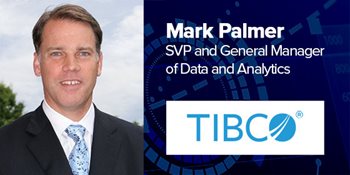
This is where my first question for Mark Palmer, SVP and General Manager of Analytics at TIBCO Software, comes into play. I asked Mark what has contributed to this success, and as noted by Gartner, how “an improved user interface and streamlined user workflow contribute to TIBCO’s top-third rating for overall ease of use.”?
“We understand that businesses are looking at analytics and business intelligence platforms as solutions that will bring substantial value to them, not just another novelty tool. As such, our platform is designed in a way that prioritizes ease of use. It doesn’t require analytics users to jump from tool to tool to do fundamental tasks such as data-prep, since 80% of analysis time is spent there. Our TIBCO Spotfire tool also offers complete interactive analytics as opposed to other solutions that just show “view-only” charts that visualize data.
The key step-change in our results this year for ease of use comes as a result of the completely redesigned user interface of TIBCO Spotfire X, which includes a redesigned user experience, embedded AI, natural language search, and industry’s first streaming business intelligence functionality.
For example, the newest version of Spotfire allows users to use natural language to search for anything from data to charts to data science models, from one, simple, prominent search box: like “Spotlight” on the Mac, it’s one place to search everything.
Another example is of embedded data science: Firms today want to leverage more data science without hiring an army of data scientists. Our vision is to put "data science at your fingertips” for business analysts. By allowing, for instance, a forecasting model to be placed on a Spotfire graph with the click of a button, you begin to democratize access to data science with Spotfire X.
Finally, IoT and streaming real-time data are going mainstream in the enterprise. Spotfire X democratizes access to streaming data for the first time. As easily as loading a spreadsheet of data, Spotfire X allows the business analyst to connect to live data, and the entire analytics experience becomes live. Business analysts can evaluate live conditions and can query the future for the first time in any BI product. Once again, Spotfire X does this with the drag-and-drop simplicity it’s known for and opens BI up to a whole new world of digital business applications.
To summarize, with the Spotfire X release, we have made it dramatically easy to prepare and analyze data, use artificial intelligence, search for insights, embed data science, and perform streaming analytics resulting.”
Besides all of their momentum mentioned above, and being named a visionary, Gartner noted that the investments in their “social media marketing, strategic partnerships, and thought leadership programs over the past year have yet to materially improve its market momentum.” I asked Bipin Singh, Director of Product Marketing, TIBCO Software, what his thoughts were on Gartner’s caution, and the steps 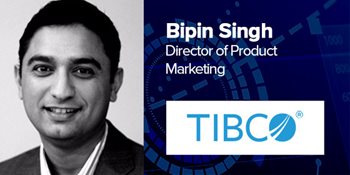 they are taking—or have taken—in addressing these concerns?
they are taking—or have taken—in addressing these concerns?
“At TIBCO, we are very customer-focused, from developing innovative products to help customers solve the most important problems in the enterprise, to catering to individual use cases by understanding their challenges. We offer a very complete set of capabilities for personas, such as business users, analysts, data scientists, and more, all of whom use TIBCO Spotfire to solve some of their most important analytics use cases, many of which are high-value, industrial-grade IoT analytics and predictive analytics applications. These personas are almost always solving lines of business problems through analytics and don’t necessarily relate with IT analyst firms.
We use state of the art digital marketing tools and techniques, such as paid search, retargeting, SEO/SEM, and conversion optimization to capture and nurture these analytics personas throughout their buyers’ journeys. For example, we use a combination of live product demos, free trial programs, and persona-customized, automated email drips to accelerate lead-to-opportunity conversion.”

Gabriella Pirrone
Gabriella is the Digital Marketing Assistant for CMSC Media. She brings a wealth of knowledge from not only a CMS perspective but also content, SEO and eCommerce. She enjoys everything social media and staying ontop of the latest trends in the digital marketing world.